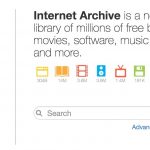Periscope Cracks Down On “Game of Thrones” Piracy, But It’s No Copyright Nightmare–Yet
Periscope can be used to consume media without paying for it. But do you really want to watch Game of Thrones this way?
Practically the moment Twitter launched Periscope, the speculation began: Could this new wave of live-streaming mobile apps be the Internet’s next copyright problem child?
Last night, Periscope got its first test as a piracy platform with the premiere of Game of Thrones. The verdict? Yes, people use Persicope to illegally stream television shows, and while the numbers and video quality are too low to call it a copyright nightmare, the app could easily become a much bigger headache for rights holders in the future.
Periscope was used by “dozens of users” to tune into last night’s Game of Thrones season premiere, according to Mashable. That’s hardly an epidemic, but it’s something Twitter is taking very seriously right off the bat. In keeping with its terms of service, the company is vowing to shut down the accounts of anyone caught streaming copyright content illegally. As the service scales—presuming there’s not another breakthrough live-streaming app next week—this offense might become harder to police. But for now, Twitter isn’t messing around.
It’s hardly a shock that the Game of Thrones premiere wound up being shared on Periscope. In fact, this precise example was easily predicted by The Atlantic two weeks ago in an article discussing the copyright implications of Persicope and Meerkat, its chief competitor.
What is surprising is that anyone would want to watch the show this way. The video quality is hardly better than that of a camcorder bootleg of a film taken from the back of a movie theater. With the first few episodes of the new Game of Thrones season already leaked from press screeners and available via torrent trackers, why bother sitting and watching a shaky live-stream of somebody’s TV set, complete with weird background noise emanating from their home?
Convenience is one factor, especially when it comes to the regional availability of content. Indeed, one Fast Company staffer—who we’ll spare the embarrassment of calling out by name—said her obsession with British soap operas is so intense that she’s tracked down low-quality YouTube streams in lieu of using torrents to indulge. And she says she could imagine using Periscope for similar purposes.
Still, the video quality on any Periscope stream leaves quite a bit to be desired, especially for content with such high production values as an HBO series. As technical constraints loosen, this could certainly change: Smartphone cameras get perceptibly better every year. And if someone figures out a way to port audio and video directly from a TV into a smartphone, the experience would become much more palatable—perhaps even akin to streaming video on YouTube, Netflix, or HBO Now. Then, Twitter would have a problem.
Legally speaking, Periscope gets some slack from the “safe harbor” clause of the Digital Millennium Copyright Act (DMCA), a provision that absolves the content host of responsibility for infringing material distributed on their service, as long as they respond properly to the law’s ascribed procedures for dealing with takedowns. But Twitter isn’t waiting for takedown notices or technological advancements, preferring instead to send a message to users loud and clear early on.
To help ensure that Periscope does indeed scale—without becoming a cesspool of nastiness like Chatroulette, for example—Twitter is pulling out all the stops to keep things tame, safe, and legal right now, during Periscope’s early days. The no-nonsense anti-piracy tack is a big part of that. Its terms of service also forbid pornographic imagery—not that that’s stopped people from getting naked on Periscope. It also recently made an adjustment to its location-tagging functionality after Fast Company called out the potentially creepy nature of how Periscope displays the location of its users.
Fast Company , Read Full Story
(175)














